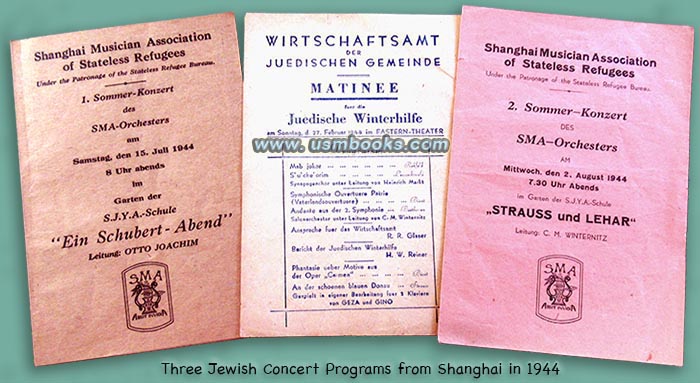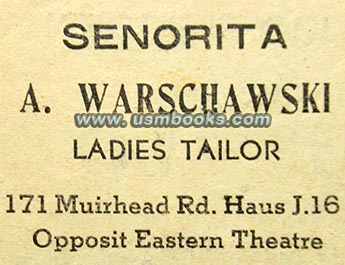Some time ago we purchased the Östreicher (variously Oestreicher, Ostreicher and pronounced OST-ryker) cache or treasure consisting of a suitcase containing 30+ pieces of ephemera and mementoes of immigrant Hugo Östreicher and members of his family, in a decrepit warehouse in Los Angeles, California. We bought these items from a lady who liquidated estates in and around that city for the past 50 years. She purchased the Oestreicher lot as you can see it on four separate USMBOOKS web pages, years ago in the Southern California town of Laguna Woods, as a part of the estate of a deceased woman, Gretchen “Gretl” Oestreicher Warschawski Warner. |
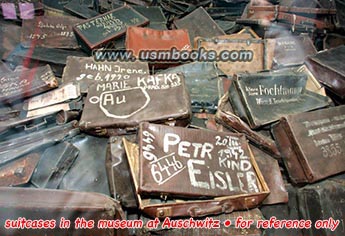 |
| We were immediately attracted to the rare cache because of the distinctive old personalized German Derby Koffer brand vulcan fiber suitcase in which it was found, and especially because of the similarity of that suitcase to the many of a similar type that we had seen in the museum of the former German Concentration Camp at Auschwitz in Poland. The dark Derby Koffer suitcase measures 16 x 26 inches and is 7 inches deep, and has the name Hugo Oestreicher painted on it in bold white letters above the words New York via San Francisco in precisely the manner of the many suitcases in the museum at Auschwitz. There is not the slightest doubt about the provenance of the suitcase or the material in it. |
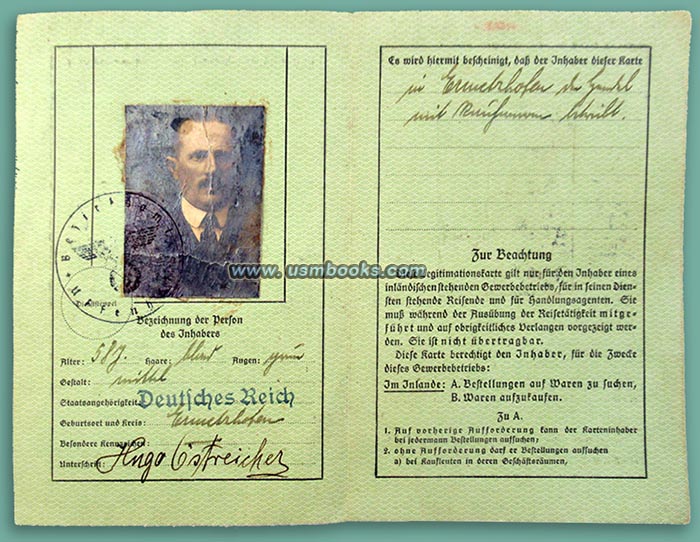
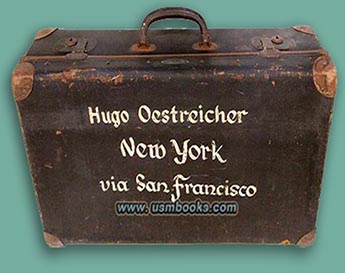 |
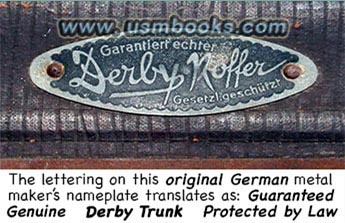 |
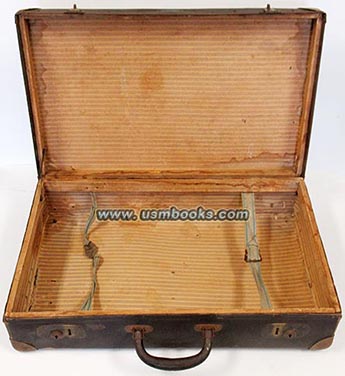 |
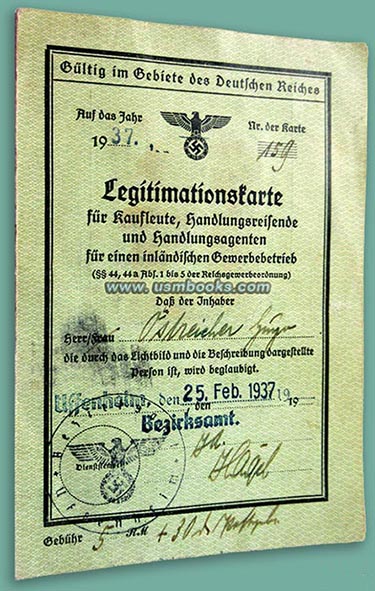
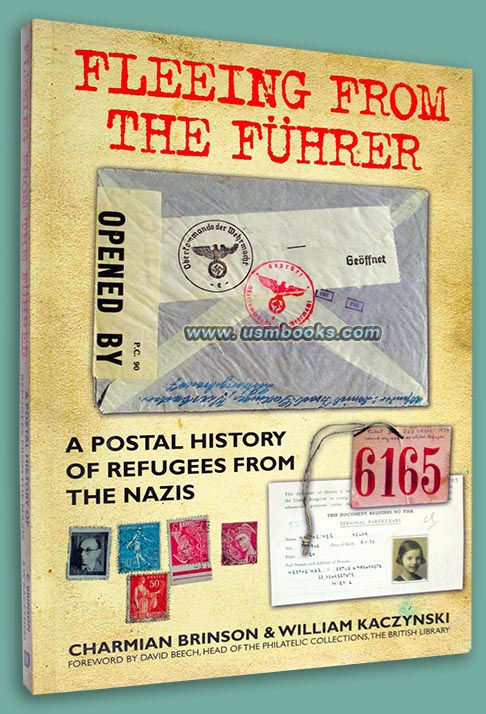
We have assembled a list of names of other German Jews who fled Nazi Germany and lived in Shanghai during World War II. We add it to this listing for the sake of history and in the hopes it might help somebody with family research. Click HERE.
A link is provided at the bottom
of that
USMBOOKS web page to return to this
main
Oestreicher web page.
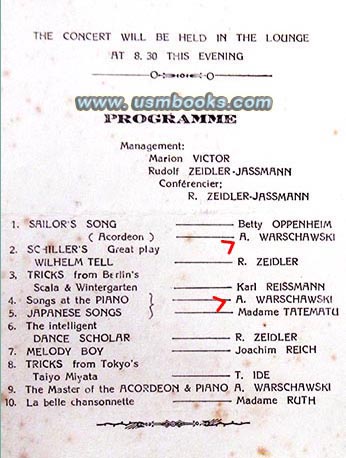 |
by the International Committee for Granting Relief to European Refugees with the number of her German passport issued by the Berlin Police in 1938. The Warschawski's passports were consecutively numbered.. |
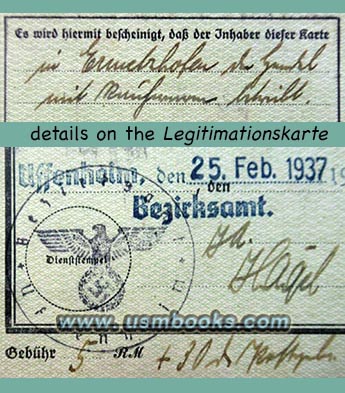 |
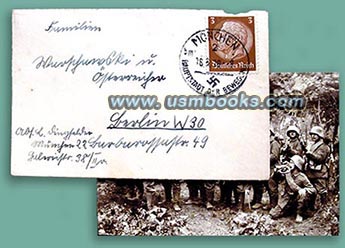 |
| Hugo Östreicher was a German butcher born in the small town of Ergersheim, Germany on 18 December 1878, and he was a Jew. Based upon a splendid photo of a group of German soldiers that was in the suitcase in an envelope mailed from München Hauptstadt der Bewegung (Munich, Capital of the [Nazi] Movement) on 16 March 1938 to “Family Warschawski & Österreicher” in Berlin-W3O and other data, we know that Hugo served from the state of Bavaria in the 10th Bavarian Infantry Regiment in the German Army in France during World War I, like thousands of other patriotic German Jews. A handwritten caption in pencil on the back of the picture mentions in part “remembering the battle in Somme October 1916”. |
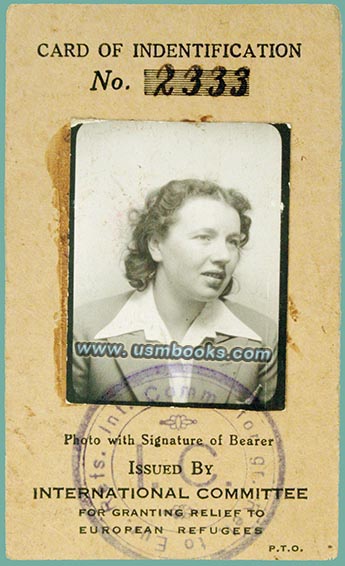
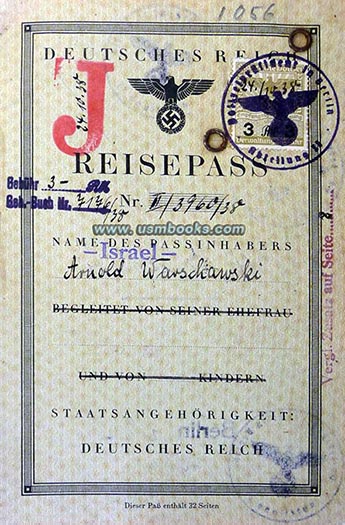 |
| Among the original documents and ephemera found in the suitcase is the extremely rare original Third Reich German passport of ladies tailor Arnold Warschawski. Warschawski was born on 31 May 1910 and married 27 year old Gretchen ‘Gretl’ Oestreicher in Berlin on 31 May 1938, thus becoming the son-in-law of Hugo Oestreicher. This Deutsches Reich Reisepass is number II/3960/38, issued by the Polizeipräsident Berlin Abteilung II (Head of Berlin Police Department 2) on 24 October 1938. On the day it was issued the customary red J was added and dated on page 1. The ID photo of 28 year old Arnold Warschawski is correctly stamped in the upper right and lower left corners with the purple eagle and swastika rubber stamp of the Polizeipräsident Berlin Abteilung II. |
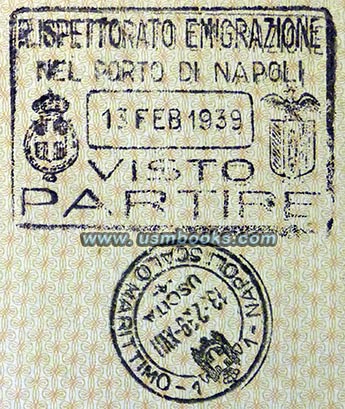 |
| One of the rarest aspects of this passport is the stamp on page 8 applied at the German Consulate in Shanghai on 27 April 1939 (shown left). It makes it official that Arnold Warschawski became Arnold Israel Warschawski, as a result of the German “Executive Order on the Law of the Alteration of Family and Personal Names” that made it obligatory for all German Jews with “non-Jewish” first names to add “Israel” or “Sara” as their appropriate middle name. |
Above is a rare original business capitalization declaration issued to Arnold Warschawski (Hugo Oestreicher's son-in-law)
by the Financial Affairs Section of the Shang Hai Personal Tax Bureau for a business (a sole proprietorship)
opened in April 1939. It has 10 yuan worth of tax stamps attached and is proof of Chinese examination of
business tax and business registration. It is worth noting that because of Chinese pronunciation
difficulties Warschawski’s name is spelled Warscharwsky on the official document. The dollar amount shown on the certificate is of course NOT US dollars.
Left, an ad for Ladies Tailor A.Warschawski located on Muirhead Road in Shanghai. It is interesting to note that when Arnold and Gretl Warschawski arrived in the United States on 2 May 1947, they both listed their occupation as "ladies tailor".
Left, an ad for Ladies Tailor A.Warschawski located on Muirhead Road in Shanghai. It is interesting to note that when Arnold and Gretl Warschawski arrived in the United States on 2 May 1947, they both listed their occupation as "ladies tailor".
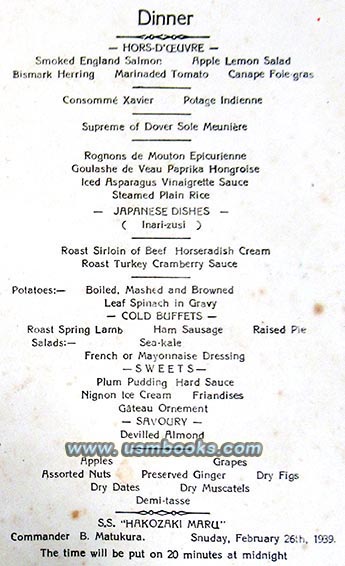
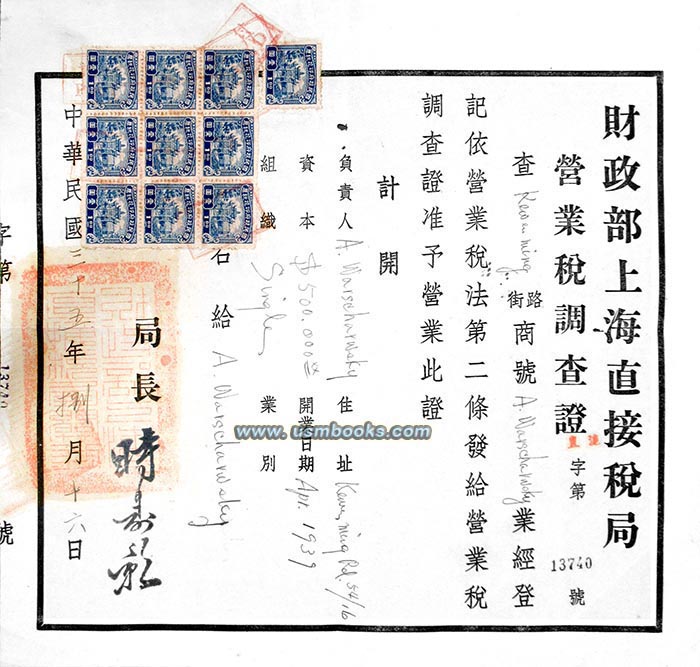
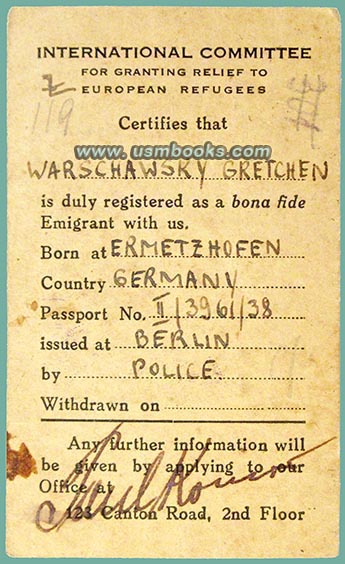
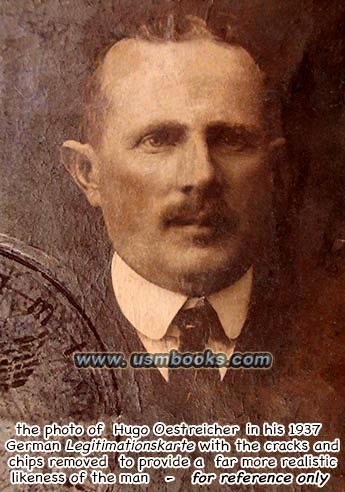 |
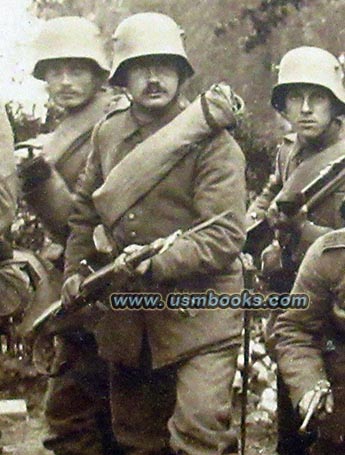 |
Part of the challenge we faced in trying to understand the many pieces of the Oestreicher family puzzle was that we ran into incorrect entries on “scholarly” genealogical websites, incorrect names, dates and hometowns, as well as spelling errors in period and postwar books and in Holocaust source material. As we examined the content of the suitcase, we quickly realized who Hugo Oestreicher was and began to understand the long and complex route he, his wife Berta and his suitcase had taken to get from Nazi Germany to Shanghai, China and from Shanghai to San Francisco, and eventually to Southern California. We were struck by the incredible historical nature of the museum quality ephemeral material inside. The whole story would make a wonderful movie!
Among the first documents we found was an extremely important four-page 1937 dated Nazi German Legitimationskarte or personal Professional Identity Card bearing an actual German government stamped photograph of Hugo Östreicher issued at Uffenheim, Germany. That official government issued ID card (shown right & below) quickly established exactly who Hugo Östreicher was, his age, his relationship to people named on other documents in the suitcase, and why the German-made suitcase had traveled so far so long ago, nearly around the world.
Among the first documents we found was an extremely important four-page 1937 dated Nazi German Legitimationskarte or personal Professional Identity Card bearing an actual German government stamped photograph of Hugo Östreicher issued at Uffenheim, Germany. That official government issued ID card (shown right & below) quickly established exactly who Hugo Östreicher was, his age, his relationship to people named on other documents in the suitcase, and why the German-made suitcase had traveled so far so long ago, nearly around the world.
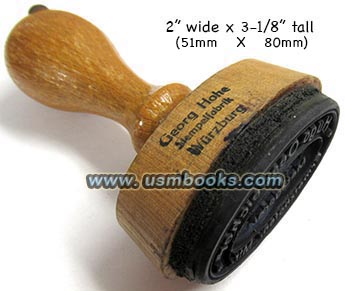 |
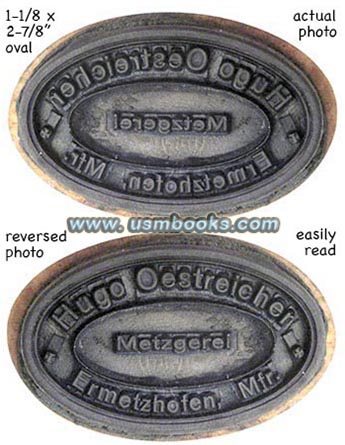 |
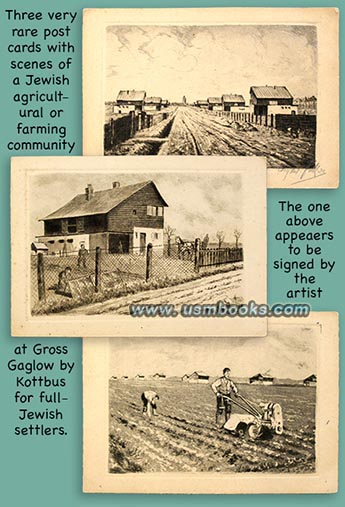 |
GROSS-GAGLOW |
For additional historical background information about the rein-jüdische landwirtschaftliche Siedlung Gross-Gaglow bei Kottbus (Pure Jewish Agricultural Settlement at Gross-Gaglow near Cottbus) and close-up pictures of the extremely rare postcards shown above, click HERE.
|
| With the passage of time, Oestreicher was caught up in the political and legal changes introduced in Nazi Germany in the 1930s that reduced Jews to a status of non-citizens, and the implementation of anti-Jewish laws passed in part to induce Jews to leave Germany. |
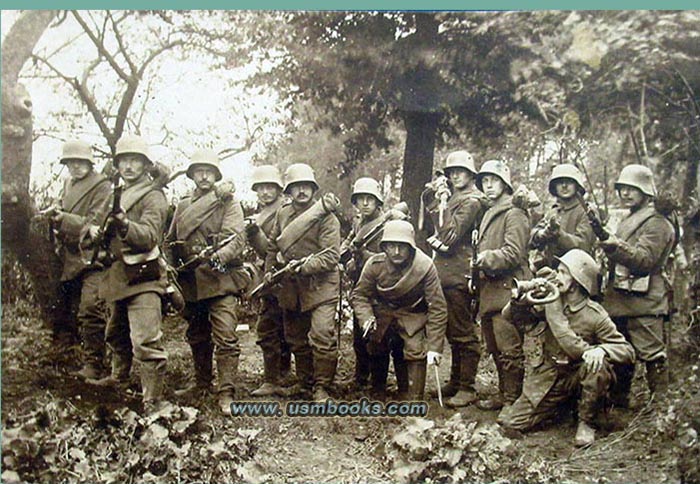 |
and Österreicher" at an address in Berlin W30. We are sure the man standing (not crouching) near the center is Hugo Östreicher and the text on the back remembers "our time in the Somme in 1916". |
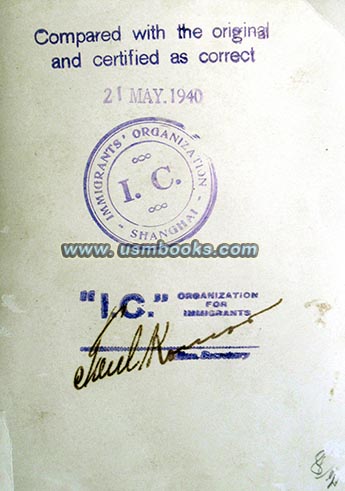 |
|
| Hugo Oestreicher’s suitcase itself clearly shows that after arrival in the USA he intended to go on to New York, but in fact he and his wife stopped in San Francisco to await the arrival of their daughter and son-in-law on another ship. Hugo and Berta Oestreicher arrived in San Francisco aboard the SS Marine Lynx from Shanghai on 7 April 1947 . Their daughter Gretl and her husband Arnold left Shanghai aboard the ship USS General M.C. Meigs on 16 April 1947 and arrived in San Francisco on 2 May 1947. From additional research we know that when Arnold and Gretl Warschawski became US citizens in 1952 they changed their family name from Warschawski to Warner. They lived and worked at various places in the Los Angeles area in southern California. Gretl’s parents followed them to Los Angeles where Hugo Oestreicher died on 23 January 1958 and Berta on 6 February 1971. Arnold Warschawski - Warner died on 6 March 1992 and Gretl died on 7 January 2008. It was at her estate sale in Laguna Woods, California that this suitcase and the treasure trove in it were acquired by the lady in Los Angeles from whom we purchased it many years later. |
Hugo Oestreicher understood that his future and that of his family was not in his homeland. He decided to leave Nazi Germany and his Jewish wife Berta (née Schwarzwaelder), daughter Gretchen “Gretl” and Jewish son-in-law Arnold Warschawski left with him.
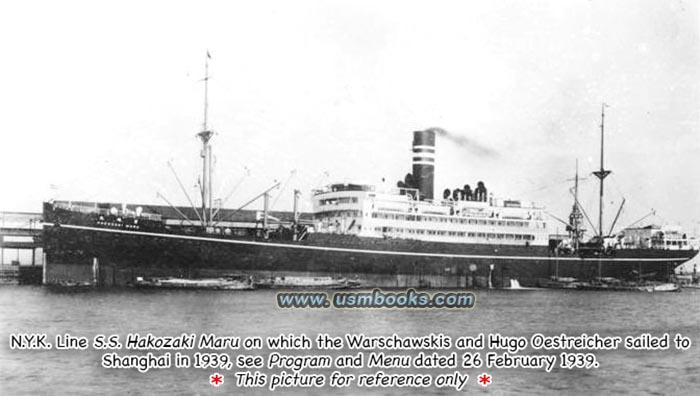 |
| What happened to Hugo Oestreicher and other members of his family can best be established by additional research and especially through careful examination of the many other pieces of ephemera that came in the suitcase. Of special importance is a unique N.Y.K. Line ship’s menu and program (above & below) dated 26 February 1939 for the trip that took Hugo and Berta Oestreicher, their daughter Gretl, and son-in-law Arnold Warschawski to Kobe, Japan and/or to Shanghai, China aboard the Hakozaki Maru, shown in the reference photo above. |
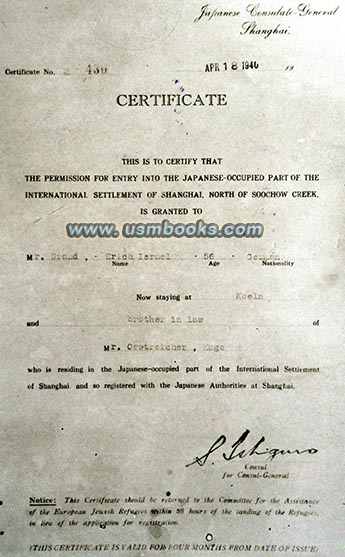
EXTREMELY RARE PIECES OF EPHEMERA FROM THE JEWISH ZONE DURING WORLD WAR II IN SHANGHAI, CHINA |
family's years in the thriving Jewish business and cultural community of the Stateless Refugees Zone in Shanghai, click HERE. |
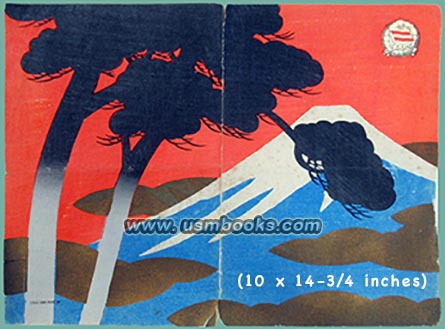
It is clear from other of these 30+ documents that Hugo and Berta Oestreicher and their daughter Gretl and son-in-law Arnold Warschawski lived, worked and remained in Shanghai, China, in the Jewish Zone of that city, under Japanese occupation * for the duration of World War II.
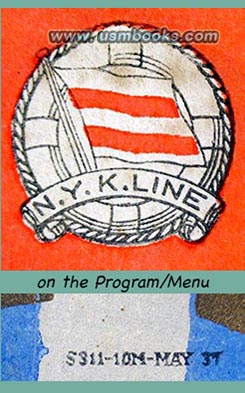
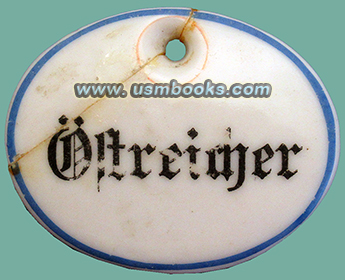 |
| The photos above, left and below show other items recovered from the suitcase that traveled around the globe with Jewish refugee Hugo Oestreicher. The rubber name stamp, produced by a stamp factory in the city of Würzburg, shows Hugo Oestreicher had his own Metzgerei or butcher shop in Ermetzhofen. The hamlet of Ermetzhofen was a stone’s throw west of Ergersheim where Oestreicher was born on 18 December 1878. The white porcelain piece is a name plate from a house door, once broken but repaired before it arrived in America. |
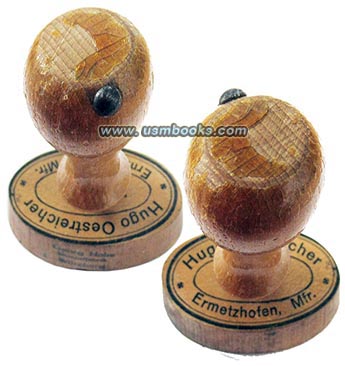 |
| There are also three extremely rare 103 x 148 mm (about 4 x 6 inch) genuine etched postcards in the Oestreicher cache that depict life in a very special but short-lived experimental agricultural community for Jews (similar to an early kibbutz) at Gross-Gaglow near Kottbus, Germany that indicate Hugo Oestreicher may have considered moving there, or that he had friends or relatives who did move there. One of the cards is signed in pencil in the lower right corner, perhaps by the artist who sketched the pictures, or by the one that did the copper metal etchings for printing the cards. Hugo Oestreicher was fortunate he never did move to Gross-Gaglow, because after the Nazis came to power in Germany they evicted the residents, closed the Jewish agricultural community and confiscated and/or sold off the land and buildings. Many of the Jews that had settled in Gross-Gaglow were later deported to concentration camps and most deportees died in one. |
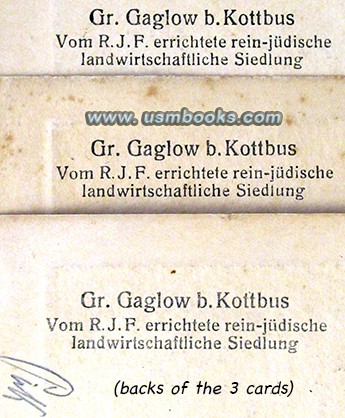 |
* For an accurate understanding of why and how Hugo Oestreicher and so many other European Jews migrated to the Treaty Port of Shanghai, China in the 1930s, and just how its large, sheltered population of “Stateless Jews” lived, see especially pages 88 - 95 of the excellent book Fleeing From The Führer by Brinson & Kaczynski (The History Press, Stroud, UK 2011). That book even has a color picture of a rare envelope mailed on 27 December 1941 by Oestreicher's 56 year old brother-in-law Erich Israel Brandt of Köln (Cologne) from Germany via Siberia to Hugo Oestreicher in Shanghai. Oestreicher had been granted permission by Japanese Authorities in China on 18 April 1940 for his brother-in-law Erich Brandt to enter the Japanese occupied part of the International Settlement in Shanghai north of Soochow Creek but apparently Brandt decided not to go. He was deported to Litzmannstadt in 1942.
A fine example of the 192-page heavily illustrated color book Fleeing From The Führer is part of this lot and will be sent to the buyer of the Oestreicher lot at no additional charge.
A fine example of the 192-page heavily illustrated color book Fleeing From The Führer is part of this lot and will be sent to the buyer of the Oestreicher lot at no additional charge.
For additional information and pictures of the original Nazi passport Arnold Warschawski used to leave his country of birth in February 1939, click HERE. This original J-stamped Nazi passport issued in Berlin on 24 October 1938 is a part of the Oestreicher / Warschawski Jewish refugee 'cache' offered for sale.
A link is provided at the bottom
of that
web page to return to this main
Hugo Oestreicher web page.
A link is provided at the bottom of that
web page to return to this main
Hugo Oestreicher web page.
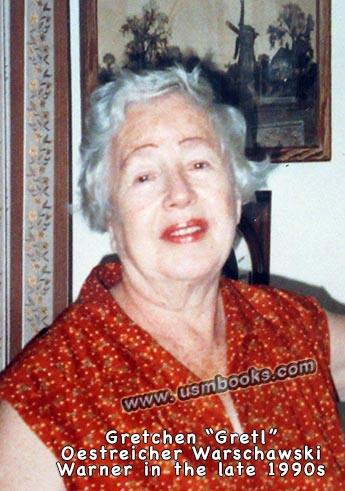
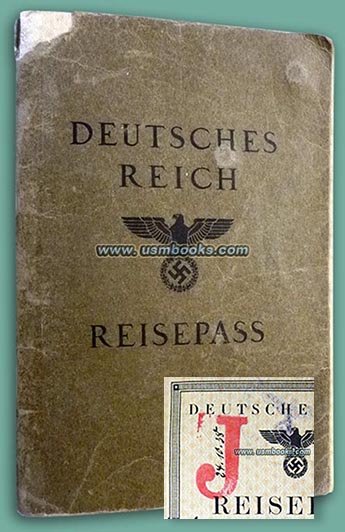 |
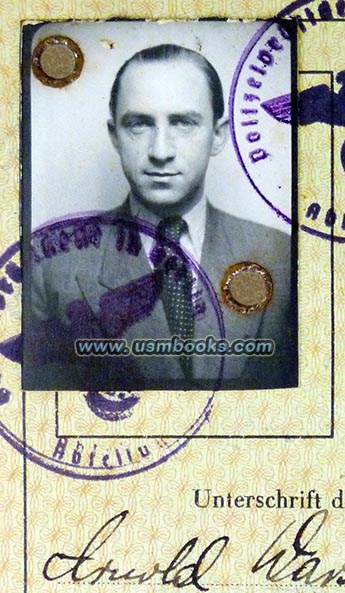 |
| Official German and Italian border police stamps in Warschawski's passport show that he left his homeland Nazi Germany on 2 February 1938 crossing into Italy at the Brenner Pass. On 13 February 1939 the Warschawski’s boarded the Hakozaki Maru (a steamship of the Nippon Yusen Kabushiki Kaisha or Japanese N.Y.K. Line) in Naples, Italy and sailed for Shanghai, China. Shown right are the two official Italian exit stamps on page 32 in this passport. |
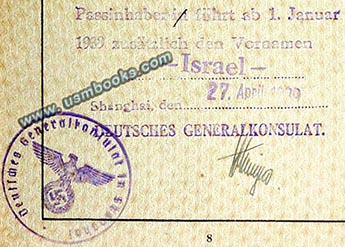 |
| Note that the name Israel was also added to the first page of the 32-page Nazi passport at that time with a rubber stamp. |
A link is provided at the bottom of that USMBOOKS web page to return to this
main Hugo Oestreicher treasure trove web page.
main Hugo Oestreicher treasure trove web page.
IMPORTANT PRICE INFORMATION |
is ** SOLD ** |
OESTREICHER / WARSCHAWSKI TREASURE TROVE
|
